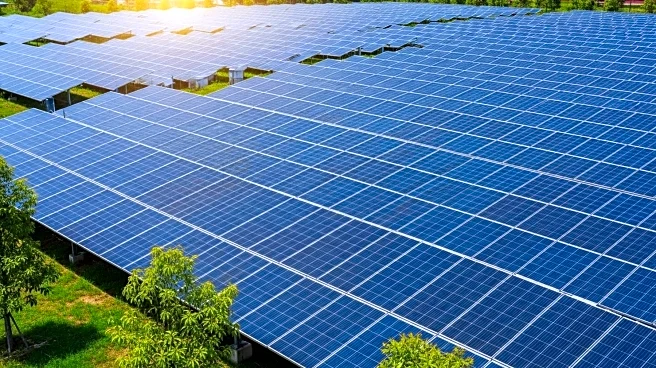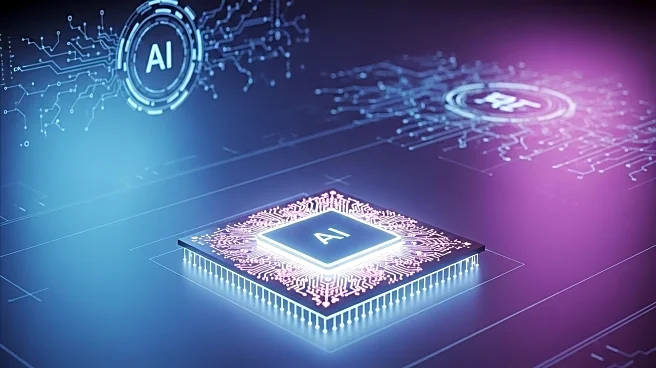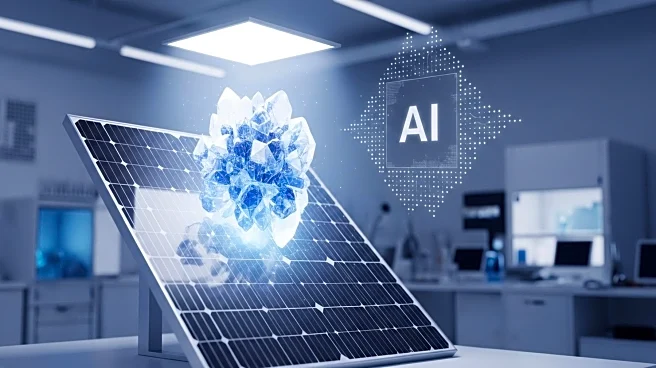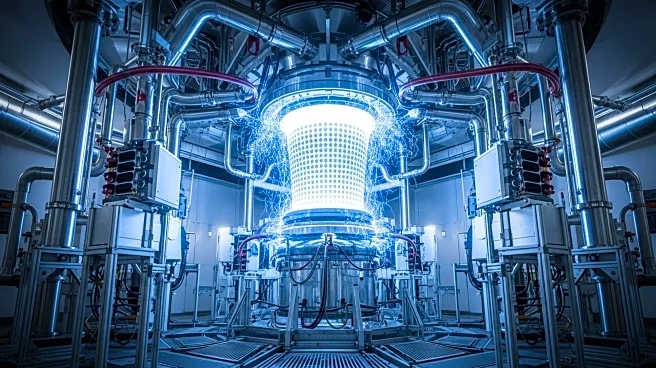What is the story about?
What's Happening?
Researchers at Chalmers University of Technology in Sweden have made significant progress in understanding halide perovskites, a promising material for next-generation solar cells. By using computer simulations and machine learning, they have unraveled the complex behavior of formamidinium lead iodide, a crystalline compound with excellent optoelectronic properties. This breakthrough could lead to the development of more efficient and environmentally friendly solar cells. The study, published in the Journal of the American Chemical Society, provides insights into the material's low-temperature phase, which is crucial for designing and controlling solar cell materials.
Why It's Important?
The advancement in understanding halide perovskites could revolutionize solar power technology, offering a sustainable solution to meet rising global energy demands. These materials have the potential to create cost-effective, flexible, and lightweight solar cells, which could be integrated into various applications, from smartphones to building facades. By improving the efficiency and stability of solar cells, this research could contribute to reducing reliance on fossil fuels and advancing clean energy technologies, aligning with global efforts to combat climate change.
Beyond the Headlines
The use of AI and machine learning in material science represents a significant shift in how researchers approach complex problems. By enabling longer simulations and more detailed models, these technologies can accelerate the discovery and optimization of new materials. This approach not only enhances the understanding of halide perovskites but also sets a precedent for future research in other areas of material science, potentially leading to breakthroughs in various fields.
AI Generated Content
Do you find this article useful?














